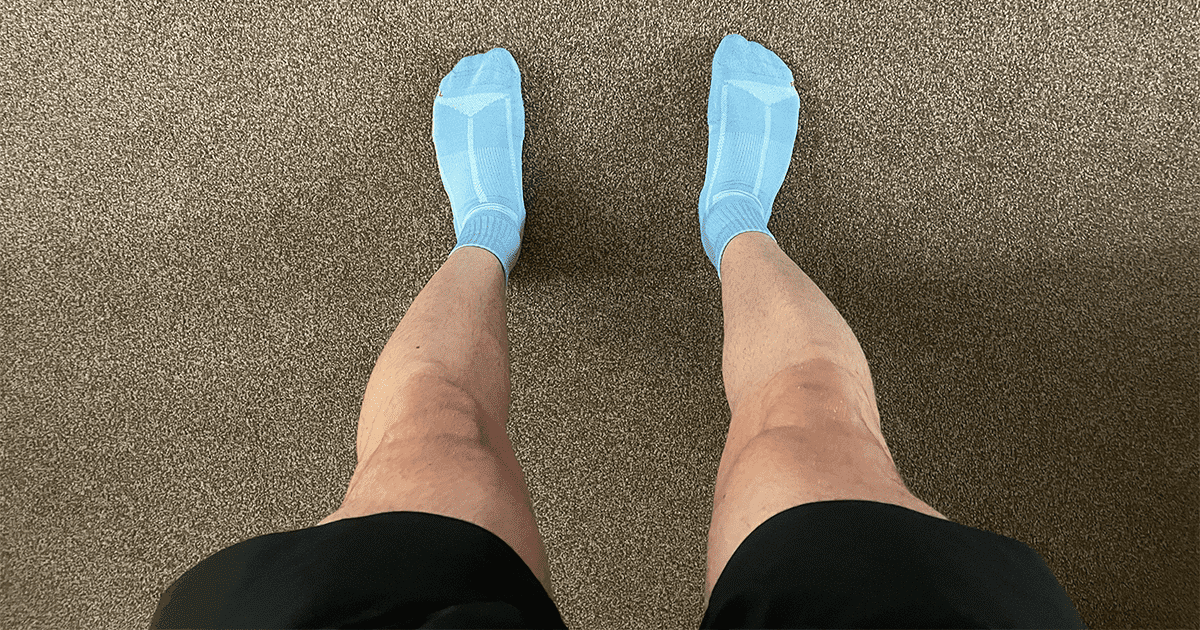The ultimate guide to cross-training for runners

As a runner, cross-training is a fantastic tool to maintain fitness while injured. As well as this, cross-training is frequently used alongside regular running training to increase fitness while reducing your risk of injury.
Related: A 10-step approach to recovering from injury.
The majority of runners at one time or another will find themselves injured, often turning to cross-training to maintain fitness. Whether this is cycling, weight-training, swimming, or even rowing, there are many benefits to be gained while injured.
However, once their injury subsides, many choose to drop their additional cross-training and instead focus solely on their running. While this isn’t a necessarily bad move, maintaining some form of cross-training alongside your regular running will undoubtedly improve your fitness, reduce your risk of injury, and, more often than not, reduce the time required to return to the level you were at previously.
This article will go into further detail into what cross-training is, the benefits of cross-training, and the types of cross-training you should look to include as a runner.
What is cross-training?
Cross-training is any form of sport/exercise you partake in, in addition to your main sport, in our case: running. For example, you may run four times per week, swim once, and cycle twice. This would be cross-training. Further cross-training methods will be discussed below.
Cross-training benefits
There are several benefits to regular cross-training for runners. These include:
- Reduced risk of injury
- Improved aerobic capacity
- You won’t get bored as easily from running
- You can train even when injured
1. Reduced risk of injury
Replacing or supplementing your running with cross-training will reduce your risk of injury. Low-impact cross-training activities such as swimming and cycling are great for developing our aerobic fitness. Secondly, cross-training increases blood flow to our working muscles used while running to flush out toxins and reduce our recovery time between sessions.
Related: How to recover after a run or race.

With weight training being a form of cross-training, this complements our running and also reduces our risk of injury. Weight training allows us to strengthen important running muscles such as the glutes, hamstrings, and core while fixing muscular imbalances – a common cause of injury.
2. Improved aerobic capacity
Many cross-training activities are great for improving our aerobic capacity. Examples of aerobic cross-training activities include cycling, swimming, and aqua jogging. Including these into your training alongside your regular running will improve your aerobic capacity and cardiovascular system, essential for faster running.
However, many runners see one of the greatest benefits to including cross-training into their schedule is that cross-training also works the aerobic system, allowing us to become better runners without actually running.
3. You won’t get bored as easily
Cross-training allows a mental break from your running routine. Whether running three or seven days per week, it’s easy for running to become boring from time to time. Including cross-training into your schedule allows you something to look forward to if your running gets stale. Besides, you’ll likely see fitness improvements once returning to the sport!
4. You can train even when injured
One of the main benefits of cross-training is still being able to train when injured. Training through injury allows runners to maintain a high level of aerobic fitness, essential for a fast return to running. Be sure to clear all activities with a doctor beforehand, ensuring your chosen method of cross-training will not worsen your injury.
What types of cross-training should I do as a runner?
1. Weight/strength-training
Strength training is becoming increasingly popular and heavily implemented in many sports as of recently, including that of running. However, cross-training is more of a supplemental form of training as this does not directly improve our cardiovascular fitness, as mentioned by certified running coach Laura Norris.
This does not go to say you shouldn’t incorporate strength training into your weekly training, you definitely should be.
Regular strength training (2-3x per week maximum) as a runner will improve running economy, work on muscular imbalances (a common cause of injury), and strengthen our muscles and tendons to produce more power, all while reducing our risk of injury.
So, now that we know the many benefits of incorporating strength training into our routine, what kinds of exercises should you perform in these weekly sessions?
- Bodyweight exercises such as push-ups, crunches, planks, and pull-ups are a great place to start
- Squats
- Deadlifts
- Glute bridges
- Walking lunges
- Russian twists
- Hyperextensions
Generally speaking, as a beginner, throwing together a mix of bodyweight and or weighted exercises alongside core and stability work is plenty, to begin with. As you become more advanced, you can focus on more complicated lifts such as squats and deadlifts, still with a heavy emphasis on core training.
If you don’t already know, a strong core is essential to remaining injury-free, improving running economy, improving posture, and overall running performance. Be sure to include some form of core training into your routine, you won’t regret it!
Related: Why and how strength training is essential for faster, injury-free running.
2. Cycling
Whether you choose to cycle indoors or outdoors is up to you – however, the benefits remain relatively similar. Cycling is a very low-impact activity, especially when compared to running. This makes it the perfect activity for building up aerobic endurance while avoiding any impact injuries – unless, of course, you take a tumble and fall off your bike.

When cycling, we recommend including a mix of different training workouts. These include:
- Interval training (for example, 5×3 mins at a hard effort)
- Long, slow rides
- Sprints
- Hill rides and hill sprints
If you’re currently injured, you’ll benefit greatly from including a mix of all four of these cycling workouts into your training schedule. However, if managing regular running on top of this, we recommend only performing 1-2 per week, therefore, reducing your risk of overtraining.
Cycling is particularly beneficial as it strengthens many of the same muscles used for running. As well as this, your cycling cadence can be mapped onto that of your running – even allowing for an improvement in your running economy.
Related: 8 Signs you may be overtraining as a runner.
3. Walking
If you can’t run, walk! Jeff Galloway suggests walking as this mimics running, just a lot slower and with less impact on the body. Walking, especially if injured, is a great way to recruit the same muscles as running as well as staying connected with being outside – a great psychological benefit to getting in those daily steps.
Likewise, if you haven’t already figured, you can walk a lot further than you can run! Take advantage of this. Head for a long hike, morning walk or stroll in the sun – allowing your muscles that key stretch and transition back into running, not to mention the relaxing benefits of walking itself.
4. Swimming
Swimming is an all-round great exercise for runners, even if it doesn’t follow a similar movement pattern, such as cycling. Regular pool training will improve core strength, endurance, and also strengthen important upper and lower body muscles.

Swimming is particularly useful for those suffering from ligament and or muscle damage, especially if they currently cannot run. Including regular swimming into your training, even when not injured, is a great way to reduce your risk of injury while keeping your training fun and varied. You never know, you may get involved in a triathlon further down the line!
5. Elliptical
If you can get to your local gym, or perhaps have an elliptical in the garage, we highly recommend giving it a go! This is a great exercise to mimic the motion of running while increasing your heart rate, getting that sweat on, and increasing your aerobic endurance.
Be sure to increase the resistance to a hard yet sustainable effort, getting as much out of the session as possible.
As with many forms of training and exercise, if you’re looking to mix it up, you can also include interval training. An example of interval training using the elliptical may be as follows:
- 5-minute warmup
- 3-minutes at an increased resistance
- 60-90 seconds at an easy resistance
- Repeat 6-8x to begin with
- 5-minute cool-down
How often should I cross-train?
Beginners should look to cross-train one to two times per week. Look to cross-train either the day before your long-run to rest your legs or the day after your long run to help recover your legs. These cross-training sessions should be anywhere from twenty to sixty-minutes at a time. However, remember not to overdo it so much that you can’t run the next day!
If you’re already running six to seven days per week, supplementing your running with cross-training is an easy way to increase fitness without adding further running. Try cross-training two to three times per week as well as your regular training, however, be sure to build this up slowly.
Cross-training is also a great way to stay motivated. Take a couple of days off of running per week and replace these with cross-training. Slowly work your running back in, while leaving a couple of days to reap the cross-training benefits.
Cross-training vs. CrossFit
A common mistake people make is confusing cross-training with CrossFit. CrossFit is a different sport entirely and focuses on high-intensity functional movements. Runners can see improvements in their running from training CrossFit as well as their regular running. However, due to the different movements involved, there is an increased risk of injury.
How to get started cross-training?
Getting started cross-training is easy. Simply pick a cross-training activity and work it into your schedule. Whether this be cycling in the gym, swimming in the pool, or attending a weekly yoga class there’s plenty to choose from!
However, remember not to replace your running and instead to complement your existing training with cross-training. Likewise, mixing up and including variety of cross-training activities will also keep your training fun and motivating.
Cross-training classes
 Cross-training classes are also available. You can attend a spinning class, swimming training, or circuit training session as a few examples. What classes are available depends on what cross-training activities you want to participate in and, of course, the availability of these near you.
Cross-training classes are also available. You can attend a spinning class, swimming training, or circuit training session as a few examples. What classes are available depends on what cross-training activities you want to participate in and, of course, the availability of these near you.
Can you wear running shoes for cross-training?

Yes! Which shoe you choose for your cross-training is ultimately down to personal preference. We recommend wearing a low heel shoe to improve stability and prevent ankle sprains.
It should be noted that some cross-training shoes should not be run in. These are generally a much stiffer shoe and have a flat heel. If you’re looking for a shoe which fits all, we recommend getting a low heel running shoe such as a racing flat.
Is cross-training good for weight loss?
If your goal is to lose weight running, then yes, cross-training will definitely help you achieve your goal, mainly because you’re increasing your activity level further. One of the main benefits to losing weight this way is you’re able to improve your running while actually running less, also reducing your risk of injury, therefore, increasing the consistency of your weight loss journey.
Likewise, running and cross-training for weight loss keeps things much more fun with a wide variety of different activities and sports available – a key aspect of sticking to your fitness and weight loss goals.
Can I run and cross-train on the same day?
Yes, you can run and cross-train on the same day. However, we recommend leaving between six and eight hours between each activity. This way you reduce your risk of overtraining while being able to perform your best in each session, whether this is running, swimming, lifting weights, or cycling.
Related: 8 Signs you may be overtraining as a runner.
The bottom line
Whether injured or not, we highly recommend including some form of cross-training into your training schedule. Whether this is cycling, swimming, or the elliptical machine, you’re sure to reap many benefits – especially if you haven’t done it before!
However, as always, everything in moderation is best. Try your fancy at the various cross-training methods mentioned in this article and see what works best for you. You never know, you may find a new appreciation for another sport!
Cross-training for runners FAQ
Why is cross-training important for runners?
Cross-training will improve your overall strength, even out muscular imbalances, and reduce your risk of injury. As well as this, aerobic cross-training will improve your cardiovascular system – essential for running faster and further with less effort.
Is cross-training good for running?
Yes! Cross-training will reduce your risk of injury without spending as much time hitting the pavement. As well as this, cross-training is sure to keep that running spark lit while seeing regular improvements in your running.
Is elliptical good cross-training for runners?
Training on the elliptical gives the muscles used in both running and walking a chance to recover while subsequently improving your aerobic fitness and strengthing over parts of our body.
What constitutes cross-training?
Cross-training is any form of sport/exercise you partake in, in addition to your regular sport. For example, if you are a runner cycling, lifting weights, and attending yoga would all be forms of cross-training.

Matthew is a lifelong runner, chief tester of all products, the founder of Running101, and freelance content writer for active brands. When he’s not writing, he enjoys lifting weights, cycling in the Lake District, and watching fast cars drive in circles on a Sunday. He also has a BA in sport, exercise and physical activity from the University of Durham.




